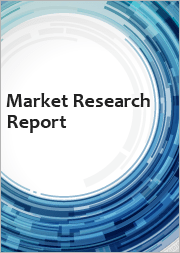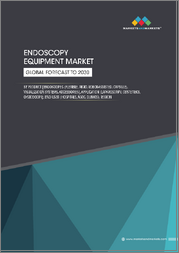
|
시장보고서
상품코드
1832385
첨단 시각화 시스템 시장 : 서비스 모델, 전개 모델, 조직 규모, 산업 분야별 - 세계 예측(2025-2032년)Advanced Visualization System Market by Service Model, Deployment Model, Organization Size, Industry Vertical - Global Forecast 2025-2032 |
||||||
첨단 시각화 시스템 시장은 2032년까지 연평균 복합 성장률(CAGR) 19.64%로 444억 5,000만 달러에 이를 것으로 예측됩니다.
| 주요 시장 통계 | |
|---|---|
| 기준 연도 : 2024년 | 105억 8,000만 달러 |
| 추정 연도 : 2025년 | 126억 9,000만 달러 |
| 예측 연도 : 2032년 | 444억 5,000만 달러 |
| CAGR(%) | 19.64% |
핵심 기술, 실용적인 트레이드 오프, 현대 기업에 제공되는 의사 결정 가치를 설명하는 고급 시각화 시스템의 전략적 방향성
고급 시각화 시스템은 정적인 차트에서 몰입형 인터랙티브 경험으로 전환하여 복잡한 데이터 세트에 대한 조직의 인식, 분석 및 행동 방식을 재정의하고 있습니다. 이 시스템은 고성능 컴퓨팅, 최적화된 스토리지 아키텍처, 정교한 렌더링 파이프라인을 통합하여 의사결정 환경 전반에 걸쳐 실시간 상황 인식을 제공합니다. 그 결과, 운영, 계획, 고객 인게이지먼트 분야의 리더들은 기존 데이터 스트림에서 더 높은 가치를 창출하는 동시에, 이전에는 지연시간과 통합의 제약으로 인해 실용적이지 못했던 새로운 워크플로우를 구현할 수 있게 되었습니다.
이후 소개에서는 기술적 구성 요소, 도입 촉진요인, 다양한 조직적 배경에 대한 도입에 대한 실질적인 고려 사항을 정리합니다. 하드웨어 선택, 소프트웨어 프레임워크, 서비스 제공 모델의 상호 관계를 강조하고, 사용자의 생산성과 운영 탄력성에서 투자가 불균형적인 수익을 가져다주는 곳을 강조합니다. 이 섹션에서는 역량과 트레이드오프에 대한 명확한 기준선을 설정하여 전략적 구현을 형성하는 시장 변화, 정책의 영향, 세분화별 행동, 지역적 역학을 보다 심층적으로 분석할 수 있는 단계를 설정합니다.
클라우드 네이티브, 엣지 컴퓨팅, AI 트렌드의 수렴으로 인해 시각화 아키텍처, 사용자 기대치, 보안 요구사항이 업계 전반에 걸쳐 어떻게 변화하고 있는가?
지난 몇 년 동안 기술 트렌드와 비즈니스 우선순위의 진화로 인해 고급 시각화 환경은 빠르게 변화하고 있습니다. 클라우드 네이티브 아키텍처와 엣지 컴퓨팅의 도입이 가속화되면서 저레이턴시 렌더링과 분산 분석이 가능해졌습니다. 동시에 최신 머신러닝 모델은 실험적 모델에서 시각화 스택의 프로덕션급 컴포넌트로 이동하고 있으며, 예측적 컨텍스트와 자동화된 이상 감지 기능을 통해 시각적 레이어를 풍부하게 하고 있습니다.
이와 동시에 사용자의 기대도 진화하고 있습니다. 이해관계자들은 인지적 부담을 줄이고 빠른 의사결정 주기를 가능하게 하는 직관적이고 역할 기반의 인터페이스를 점점 더 많이 요구하고 있습니다. 이처럼 사용성이 강조되면서 벤더들은 시각화 프리미티브와 협업, 워크플로우 오케스트레이션, 거버넌스를 통합한 컴포저블 플랫폼을 제공하게 되었습니다. 또한, 보안과 데이터 주권에 대한 우려가 높아지면서 기업들은 하이브리드 구축 전략을 채택하고, 강력한 암호화, 액세스 제어, 검증 가능한 컴플라이언스 프로세스를 입증하는 벤더를 우선시하고 있습니다. 그 결과, 시장은 현재 성능, 상호운용성, 규제 준수 사이의 균형을 맞추는 유연한 아키텍처를 선호하고 있으며, 통합업체와 전문 서비스 제공업체가 도메인별 기능을 통해 차별화를 꾀할 수 있는 새로운 기회를 창출하고 있습니다.
2025년 관세 조치가 하드웨어에 의존하는 시각화 배포의 조달, 조달처 다변화 및 아키텍처 선택에 어떤 변화를 가져왔는지 평가
미국의 2025년 관세 조치는 특히 하드웨어 집약적인 부문에서 첨단 시각화 개발을 지원하는 기술 공급망 전반에 걸쳐 측정 가능한 압력을 가했습니다. 특정 카테고리의 컴퓨팅 및 디스플레이 하드웨어에 대한 관세 인상은 조달팀이 총소유비용을 재평가하고, 장비 갱신 주기를 연장하고, 대체 조달 채널을 평가하도록 유도하여 조달 전략에 영향을 미치고 있습니다. 실제로 고성능 GPU, 특수 네트워킹 장비, 고급 디스플레이 패널 등의 리드 타임 연장 및 자본 지출 증가에 대응하기 위해 프로젝트 일정이 조정되었습니다는 것을 의미합니다.
공급업체와 통합업체는 현지 조립 가속화, 대체 부품 인증, 단일 공급업체에 대한 노출을 줄이기 위한 멀티소스 조달 전략의 공식화를 통해 대응했습니다. 이러한 조정은 클라우드 퍼스트와 On-Premise 아키텍처를 다시 생각하게 하는 계기가 되었습니다. 관세로 인해 On-Premise 하드웨어의 가격이 상대적으로 비싸짐에 따라, 기업들은 자본 지출을 운영 예산으로 돌리면서 성능을 유지하기 위해 클라우드 호스팅 렌더링 및 서비스형 데스크톱 옵션에 더욱 집중하고 있습니다. 동시에, 지연과 소버린 요구사항이 까다로운 기업들은 지역 공급업체와의 전략적 파트너십에 투자하고, 라이프사이클 계획, 보증 관리, 원격 진단에 중점을 두어 공급 불안정성을 완화했습니다. 전반적으로 관세 환경은 유연한 조달, 시나리오 기반 예산 책정, 조달, 엔지니어링, 공급업체 관리 팀 간의 보다 깊은 협력 관계의 필요성을 강조하고 있습니다.
세부적인 세분화 인사이트를 통해 서비스, 배포, 조직 규모, 산업 선택에 따라 기술 우선순위와 도입의 트레이드오프가 근본적으로 달라진다는 사실이 밝혀졌습니다.
세분화 분석을 통해 얻은 인사이트는 서비스, 배포, 조직 규모, 업종별 도입 전략에 영향을 미치는 명확한 도입 패턴과 기술 선호도를 파악할 수 있습니다. 서비스 모델에 따라 시장은 IaaS, PaaS, SaaS에 걸쳐 조사됩니다. IaaS는 컴퓨팅, 네트워킹, 스토리지로 나누어 조사했습니다. 컴퓨팅은 베어메탈과 가상 머신을 대상으로 합니다. 스토리지는 블록 스토리지, 파일 스토리지, 오브젝트 스토리지를 조사 대상으로 합니다. PaaS에 대해서는 애플리케이션 개발, 데이터베이스, 통합에 대해 더 자세히 조사했습니다. SaaS는 협업, CRM, ERP를 대상으로 합니다. 인프라 중심의 배포는 예측 가능한 성능과 풀스택 제어를 우선시하고, 플랫폼 중심의 접근 방식은 개발자의 생산성과 모듈성을 중시하며, 소프트웨어 중심의 소비 모델은 관리형 서비스와 내장된 워크플로우를 통해 가치 실현 시간을 단축하기 때문에 이러한 구분은 매우 중요합니다. 이러한 구분은 매우 중요합니다.
목차
제1장 서문
제2장 조사 방법
제3장 주요 요약
제4장 시장 개요
제5장 시장 인사이트
제6장 미국 관세의 누적 영향 2025
제7장 AI의 누적 영향 2025
제8장 첨단 시각화 시스템 시장 서비스 모델별
- IaaS
- 컴퓨팅
- 베어메탈
- 가상 머신
- 네트워킹
- 스토리지
- 블록 스토리지
- 파일 스토리지
- 오브젝트 스토리지
- 컴퓨팅
- PaaS
- 애플리케이션 개발
- 데이터베이스
- 통합
- SaaS
- 협업
- CRM
- ERP
제9장 첨단 시각화 시스템 시장 : 전개 모델별
- 하이브리드 클라우드
- 프라이빗 클라우드
- 퍼블릭 클라우드
제10장 첨단 시각화 시스템 시장 : 조직 규모별
- 대기업
- 중소기업
제11장 첨단 시각화 시스템 시장 : 업계별
- 은행, 금융서비스 및 보험(BFSI)
- 정부
- 헬스케어
- IT 및 통신
- 소매
제12장 첨단 시각화 시스템 시장 : 지역별
- 아메리카
- 북미
- 라틴아메리카
- 유럽, 중동 및 아프리카
- 유럽
- 중동
- 아프리카
- 아시아태평양
제13장 첨단 시각화 시스템 시장 : 그룹별
- ASEAN
- GCC
- EU
- BRICS
- G7
- NATO
제14장 첨단 시각화 시스템 시장 : 국가별
- 미국
- 캐나다
- 멕시코
- 브라질
- 영국
- 독일
- 프랑스
- 러시아
- 이탈리아
- 스페인
- 중국
- 인도
- 일본
- 호주
- 한국
제15장 경쟁 구도
- 시장 점유율 분석, 2024
- FPNV 포지셔닝 매트릭스, 2024
- 경쟁 분석
- Microsoft Corporation
- Salesforce, Inc.
- QlikTech International AB
- SAP SE
- International Business Machines Corporation
- Oracle Corporation
- SAS Institute Inc.
- TIBCO Software Inc.
- MicroStrategy Incorporated
- Domo, Inc.
The Advanced Visualization System Market is projected to grow by USD 44.45 billion at a CAGR of 19.64% by 2032.
| KEY MARKET STATISTICS | |
|---|---|
| Base Year [2024] | USD 10.58 billion |
| Estimated Year [2025] | USD 12.69 billion |
| Forecast Year [2032] | USD 44.45 billion |
| CAGR (%) | 19.64% |
A strategic orientation to advanced visualization systems that explains core technologies, practical trade-offs, and the decision-making value delivered to modern enterprises
Advanced visualization systems are redefining how organizations perceive, analyze, and act on complex datasets by transitioning from static charts to immersive, interactive experiences. These systems integrate high-performance compute, optimized storage architectures, and sophisticated rendering pipelines to deliver real-time situational awareness across decision-making environments. As a result, leaders in operations, planning, and customer engagement can extract higher value from existing data streams while enabling new workflows that were previously impractical due to latency and integration constraints.
The introduction that follows synthesizes technological building blocks, adoption drivers, and practical considerations for deployment across diverse organizational contexts. It emphasizes the interplay between hardware choices, software frameworks, and service delivery models, and it highlights where investments yield disproportionate returns in user productivity and operational resilience. By establishing a clear baseline of capabilities and trade-offs, this section sets the stage for deeper analysis of market shifts, policy impacts, segmentation-specific behavior, and regional dynamics that shape strategic implementation.
How converging cloud-native, edge compute, and AI trends are reshaping visualization architectures, user expectations, and security requirements across industries
The landscape for advanced visualization has shifted rapidly over the last several years, driven by converging technology trends and evolving business priorities. Accelerated adoption of cloud-native architectures and edge compute has enabled low-latency rendering and distributed analytics, which together unlock scenarios that demand continuous, near-real-time insight. Simultaneously, modern machine learning models have moved from experimental to production-grade components of visualization stacks, enriching visual layers with predictive context and automated anomaly detection.
In parallel, user expectations have evolved: stakeholders increasingly demand intuitive, role-based interfaces that reduce cognitive load and enable rapid decision cycles. This emphasis on usability has pushed vendors to deliver composable platforms that integrate visualization primitives with collaboration, workflow orchestration, and governance. Security and data sovereignty concerns have also risen to prominence, prompting organizations to adopt hybrid deployment strategies and to prioritize vendors that demonstrate robust encryption, access controls, and verifiable compliance processes. Consequently, the market now favors flexible architectures that balance performance, interoperability, and regulatory adherence, creating new opportunities for integrators and specialized service providers to differentiate through domain-specific capabilities.
Assessment of how 2025 tariff measures have reshaped procurement, sourcing diversification, and architecture choices for hardware-dependent visualization deployments
Tariff actions in the United States in 2025 have exerted measurable pressure across the technology supply chain that supports advanced visualization deployments, particularly in hardware-intensive segments. Increased duties on certain categories of compute and display hardware have affected acquisition strategies, prompting procurement teams to reassess total cost of ownership, extend equipment refresh cycles, and evaluate alternative sourcing channels. In practice, this means project timelines have been adjusted to accommodate longer lead times and higher capital outlays for high-performance GPUs, specialized networking gear, and premium display panels.
Vendors and integrators responded by accelerating local assembly, qualifying alternative components, and formalizing multi-sourced procurement strategies to mitigate single-supplier exposure. These adjustments have also catalyzed a reconsideration of cloud-first versus on-premises architectures: where tariffs made on-premises hardware relatively more expensive, organizations leaned further into cloud-hosted rendering and desktop-as-a-service options to preserve performance while shifting capital expenditures into operational budgets. At the same time, enterprises with stringent latency or sovereignty requirements invested in strategic partnerships with regional suppliers, and they placed greater emphasis on lifecycle planning, warranty management, and remote diagnostics to cushion against supply volatility. Overall, the tariff environment has emphasized the need for flexible procurement, scenario-based budgeting, and deeper collaboration between procurement, engineering, and vendor management teams.
Detailed segmentation insights revealing how service, deployment, organization size, and industry vertical choices fundamentally alter technology priorities and implementation trade-offs
Insights derived from segmentation analysis reveal distinct adoption patterns and technology preferences that influence implementation strategies across service, deployment, organization size, and industry verticals. Based on Service Model, market is studied across IaaS, PaaS, and SaaS. The IaaS is further studied across Compute, Networking, and Storage. The Compute is further studied across Bare Metal and Virtual Machine. The Storage is further studied across Block Storage, File Storage, and Object Storage. The PaaS is further studied across Application Development, Database, and Integration. The SaaS is further studied across Collaboration, CRM, and ERP. These distinctions matter because infrastructure-centric deployments prioritize predictable performance and full-stack control, platform-centric approaches favor developer productivity and modularity, and software-led consumption models accelerate time-to-value through managed services and built-in workflows.
Based on Deployment Model, market is studied across Hybrid Cloud, Private Cloud, and Public Cloud. Across this axis, hybrid models have emerged as the pragmatic default for organizations balancing latency-sensitive workloads, regulatory constraints, and the desire for centralized management. Private cloud implementations are selected when sovereignty and fine-grained control are paramount, while public cloud choices dominate when rapid scalability and managed services lower operational overhead.
Based on Organization Size, market is studied across Large Enterprise and Small And Medium Enterprise. Large enterprises tend to invest in bespoke architectures and governance frameworks that integrate visualization into mission-critical processes, whereas small and medium enterprises prioritize turnkey solutions with predictable operational expense profiles. Finally, based on Industry Vertical, market is studied across BFSI, Government, Healthcare, IT And Telecom, and Retail. Each vertical drives unique functional requirements-financial services emphasize auditability and low-latency trading analytics, government agencies prioritize compliance and secure collaboration, healthcare demands strict privacy controls and clinical integration, IT and telecom focus on network telemetry and operational dashboards, and retail seeks seamless omnichannel visual analytics for customer experience optimization. Considering these segmentation dimensions together enables tailored roadmaps that align technology selection with business outcomes and risk tolerance.
How regional regulatory landscapes, procurement practices, and talent ecosystems reshape deployment strategies across the Americas, EMEA, and Asia-Pacific markets
Regional dynamics play a decisive role in shaping vendor selection, procurement approaches, and deployment architectures for advanced visualization systems. In the Americas, buyer sophistication is high and there is a pronounced appetite for cloud-native and hybrid solutions that support rapid innovation cycles. As a result, U.S. organizations often lead in early adoption of high-performance rendering and AI-driven visualization, while procurement strategies increasingly reflect a balance between total cost and time-to-market.
In Europe, Middle East & Africa, regulatory considerations and data protection norms drive a stronger emphasis on private cloud and hybrid architectures, with buyers prioritizing vendors that offer demonstrable compliance controls and regional support. This region also shows diverse maturity levels-large institutions in major economies adopt advanced platforms aggressively, whereas emerging markets focus on pragmatic deployments that optimize cost and enable localized capabilities.
Across Asia-Pacific, rapid digital transformation, significant investments in smart infrastructure, and aggressive vendor ecosystems create fertile conditions for large-scale visualization initiatives. Public sector and telecommunications projects often act as catalysts, and regional supply chains provide both challenges and advantages in terms of component availability and integration capacity. Overall, regional strategies must factor in regulatory differences, supplier breadth, and local engineering talent when planning rollouts to ensure performance, compliance, and maintainability.
Company strategies that drive differentiation through platform integration, partner ecosystems, and verticalized specialization to accelerate adoption and reduce integration risk
Company-level behavior in this space is defined by three enduring strategic themes: platform consolidation, ecosystem orchestration, and specialization through verticalization. Leading vendors pursue platform consolidation by integrating rendering, analytics, and collaboration capabilities into cohesive stacks that reduce integration friction for enterprise buyers. At the same time, smaller, specialized firms focus on depth, delivering domain-specific visualization modules and unique IP that address industry workflows more effectively than generic offerings.
Ecosystem orchestration has taken on greater significance, as vendors form partnerships with cloud providers, hardware suppliers, and systems integrators to deliver end-to-end solutions. These alliances often influence procurement decisions because they reduce integration risk and accelerate deployment timelines. Additionally, companies that invest in open APIs, standardized connectors, and extensible SDKs gain broader adoption among developer communities, which in turn lowers the total cost of customization for buyers. Market leaders also differentiate through advisory services, robust professional services teams, and outcome-based pricing models that align vendor incentives with customer success. Observing these company behaviors enables buyers to structure vendor evaluations that balance immediate capability needs with long-term adaptability and supportability.
Actionable, phased recommendations for leaders to prioritize pilots, enforce interoperability, and align procurement and governance to accelerate sustainable visualization deployments
Industry leaders should adopt a structured, time-phased approach to capitalize on the capabilities of advanced visualization while mitigating technical and commercial risk. Begin by establishing clear use cases that map directly to measurable business outcomes, focusing initially on workflows where latency reduction, improved situational awareness, or collaborative decision-making generate quantifiable gains. By prioritizing a small set of high-impact pilots, leaders can validate assumptions quickly and build internal advocacy without overcommitting resources.
Concurrently, formalize procurement and architecture principles that emphasize modularity, interoperability, and vendor neutrality. Insist on open interfaces and containerized components to preserve future flexibility and to avoid lock-in. Given the recent tariff-driven supply chain volatility, create procurement playbooks that include multiple qualified suppliers, defined replacement components, and contract terms that address lead-time risk. Invest in workforce reskilling and change management to ensure that visualization capabilities translate into operational improvement; training plans should pair technical onboarding with scenario-based exercises that reflect real organizational decisions. Finally, align executive sponsors, security, and legal stakeholders early to streamline governance and compliance processes, thereby reducing friction during rollout and scaling phases.
A transparent, mixed-method research approach combining practitioner interviews, technical validation, and scenario analysis to underpin credible, decision-grade conclusions
The research methodology underpinning this analysis combines structured primary engagement, secondary evidence synthesis, and rigorous cross-validation to ensure reliability and relevance. Primary engagement consisted of targeted interviews with technology architects, procurement leaders, and solution implementers across diverse industries to surface real-world constraints, deployment patterns, and vendor selection criteria. These qualitative insights were triangulated with product documentation, vendor white papers, and performance benchmarks to validate claims around latency, scalability, and integration complexity.
Secondary analysis incorporated publicly available technical specifications, regulatory guidance, and trend signals from industry events and peer-reviewed sources to contextualize adoption drivers and risks. The methodology emphasizes transparency in assumptions: where supplier claims were proprietary, independent performance tests or third-party validation reports were referenced to corroborate outcomes. Limitations of the research include variability in deployment configurations and rapidly evolving component availability; accordingly, scenario analysis was applied to model alternative procurement outcomes and to highlight stress points in supply chains. This mixed-method approach ensures that the conclusions and recommendations are grounded in both practical experience and documented evidence.
A concise synthesis of strategic imperatives that aligns visualization technology choices with measurable business outcomes, risk mitigation, and operational governance
In conclusion, advanced visualization systems represent a strategic capability that blends technological innovation with operational transformation. When executed with clarity around use cases, procurement discipline, and governance, these systems produce material improvements in situational awareness, collaboration, and decision velocity. The current landscape rewards architectures that are modular, cloud-aware, and designed to integrate predictive analytics, while also acknowledging regional regulatory realities and supply chain sensitivities.
Leaders should therefore approach adoption pragmatically: validate high-value pilots, enforce interoperability standards, and adopt procurement approaches that mitigate hardware and supplier risk. By aligning technical choices with measurable business objectives and maintaining flexibility in vendor relationships, organizations can realize the full potential of visualization technologies while containing cost and exposure. Ultimately, those that combine disciplined execution with an openness to evolving patterns of consumption will capture the most sustained value from their investments.
Table of Contents
1. Preface
- 1.1. Objectives of the Study
- 1.2. Market Segmentation & Coverage
- 1.3. Years Considered for the Study
- 1.4. Currency & Pricing
- 1.5. Language
- 1.6. Stakeholders
2. Research Methodology
3. Executive Summary
4. Market Overview
5. Market Insights
- 5.1. Real-time digital twin visualization platforms enabling immersive supply chain optimization
- 5.2. AI-powered predictive analytics dashboards integrating anomaly detection and actionable insights
- 5.3. Immersive augmented reality interfaces for complex data exploration in manufacturing environments
- 5.4. Edge computing powered visualization tools delivering real-time insights on distributed IoT data streams
- 5.5. Privacy-preserving federated visualization architectures safeguarding sensitive user analytics across enterprises
- 5.6. Neural rendering based high-fidelity simulation pipelines accelerating design prototyping and testing workflows
- 5.7. Low-code cross-platform visualization builders democratizing interactive dashboard creation for business users
6. Cumulative Impact of United States Tariffs 2025
7. Cumulative Impact of Artificial Intelligence 2025
8. Advanced Visualization System Market, by Service Model
- 8.1. IaaS
- 8.1.1. Compute
- 8.1.1.1. Bare Metal
- 8.1.1.2. Virtual Machine
- 8.1.2. Networking
- 8.1.3. Storage
- 8.1.3.1. Block Storage
- 8.1.3.2. File Storage
- 8.1.3.3. Object Storage
- 8.1.1. Compute
- 8.2. PaaS
- 8.2.1. Application Development
- 8.2.2. Database
- 8.2.3. Integration
- 8.3. SaaS
- 8.3.1. Collaboration
- 8.3.2. CRM
- 8.3.3. ERP
9. Advanced Visualization System Market, by Deployment Model
- 9.1. Hybrid Cloud
- 9.2. Private Cloud
- 9.3. Public Cloud
10. Advanced Visualization System Market, by Organization Size
- 10.1. Large Enterprise
- 10.2. Small And Medium Enterprise
11. Advanced Visualization System Market, by Industry Vertical
- 11.1. BFSI
- 11.2. Government
- 11.3. Healthcare
- 11.4. IT And Telecom
- 11.5. Retail
12. Advanced Visualization System Market, by Region
- 12.1. Americas
- 12.1.1. North America
- 12.1.2. Latin America
- 12.2. Europe, Middle East & Africa
- 12.2.1. Europe
- 12.2.2. Middle East
- 12.2.3. Africa
- 12.3. Asia-Pacific
13. Advanced Visualization System Market, by Group
- 13.1. ASEAN
- 13.2. GCC
- 13.3. European Union
- 13.4. BRICS
- 13.5. G7
- 13.6. NATO
14. Advanced Visualization System Market, by Country
- 14.1. United States
- 14.2. Canada
- 14.3. Mexico
- 14.4. Brazil
- 14.5. United Kingdom
- 14.6. Germany
- 14.7. France
- 14.8. Russia
- 14.9. Italy
- 14.10. Spain
- 14.11. China
- 14.12. India
- 14.13. Japan
- 14.14. Australia
- 14.15. South Korea
15. Competitive Landscape
- 15.1. Market Share Analysis, 2024
- 15.2. FPNV Positioning Matrix, 2024
- 15.3. Competitive Analysis
- 15.3.1. Microsoft Corporation
- 15.3.2. Salesforce, Inc.
- 15.3.3. QlikTech International AB
- 15.3.4. SAP SE
- 15.3.5. International Business Machines Corporation
- 15.3.6. Oracle Corporation
- 15.3.7. SAS Institute Inc.
- 15.3.8. TIBCO Software Inc.
- 15.3.9. MicroStrategy Incorporated
- 15.3.10. Domo, Inc.



















